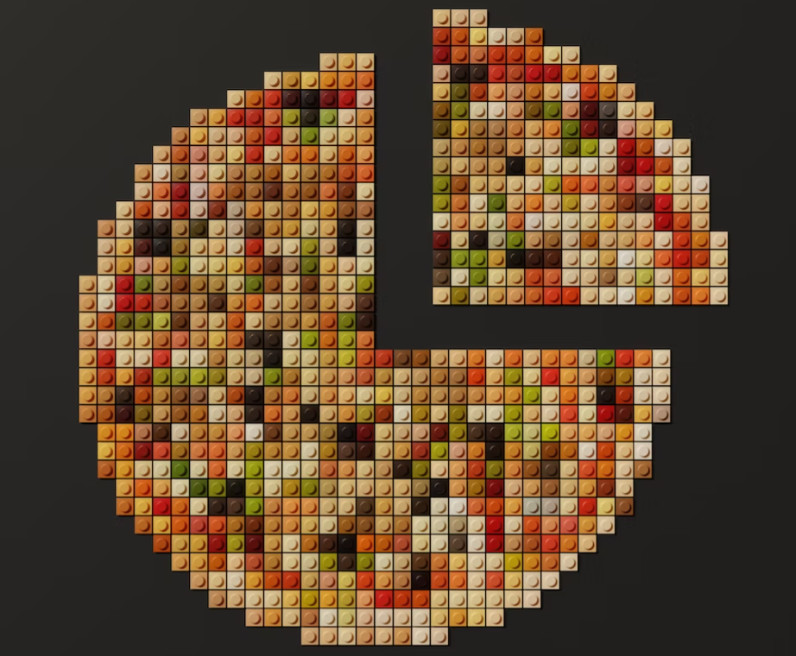
“The food is ready. Just printed!” It may seem out of place, but it could be the future of nutrition against the backdrop of climate change on an overpopulated planet.
Experts say that in the not-too-distant future, our kitchens could have their own “digital chef,” preparing meals not in the oven, stove or grill, but using 3D printing.
The so-called 3D printing – which is now widely applied.
Food is actually produced by this process, with edible materials.
It is now possible to 3D print chicken, fish, beef, vegetables and cheese.
In theory, the technique could be applied to “anything that can be made into a paste, liquid or powder,” according to a research team of engineers at the University of California. Columbia University New York, exploring the benefits and challenges of 3D printing for food.
A few months ago they managed to do so Cheesecake printusing 3D-printed spreads of cookie puree, peanut butter, chocolate, mashed banana, strawberry jam, cherry juice, and icing.
After five failed attempts, they succeeded with the sixth in making the laboratory version of the candy within 30 minutes.
“It tasted like nothing I had ever tasted before,” team member Jonathan Blutinger said at the time. But “I might have enjoyed it”…
Companies, meanwhile, are moving forward 3D meat printing From plant materials for commercial use.
Restaurants They are experimenting with 3D printing on their menu, using edible raw materials, but due to its appearance it will end up in the trash.
Recently just two students in catarrh introduced a 3D printer capable of producing fruits and vegetables from plant cells grown in a laboratory.
They stressed that the long-term goal is to provide a solution to food insecurity, which currently affects 258 million people in 58 countries and regions around the world, with increasingly ominous trends.
Solution or illusion?
At this stage of expensive and limited production, 3D printing of food could be a solution for people with dysphagia.
Of those who have special dietary needs and follow strict diets due to e.g. Diseases or allergies.
As a process, it is expected to be ideal for avoiding the spread of disease Foodborne diseasesBecause it reduces human contact with food.
However, in the background, 3D food printing is considered by many to be one of the yet-to-be-tapped potential solutions in global food production, which is developing into a challenge.
with exhibitionThe United Nations has sounded the alarm about the impacts of climate change and the potential for millions of people to become acutely food insecure around the world.
It was written studies About how 3D printing of food can make their production system more efficient.
It is estimated that it could provide the potential to provide essential nutrients to populations that do not have access to fresh food, either due to low availability or cost.
However, for this range of use, improved processes in output, speed and controls are required.
“The completion of technology should be the vision of the world Tomorrow’s food“, adds another related study.
Its authors see significant benefits for environmental sustainability, strengthening local producers, reducing future costs for consumers, and reducing food waste.
However, they stress that what is produced via 3D printing will be considered “processed.” A category that “constantly receives criticism” from agencies and organizations such as the World Health Organization.
Given the “increasing shift in consumer preferences away from processed foods,” they admit, “3D food printing may seem anathema to today’s trends.”
Now, they note, “the pendulum is swinging back to the 20th century diet of affordable real food, rather than processed food products.”
The 3D printed food market is expected to exceed $1 billion over the next decade
Does 3D food have a future?
Although there have been major leaps in technology in recent years, the mass “invasion” of 3D food printers into everyday life is expected to be several years away.
Moreover, its cost remains high. The cost of the food they produce is also high.
However, the global food 3D printing market size is expected to reach $621.1 million in 2022.
It is estimated to be approx $1.2 billion by 2032.
Across Europe, many restaurants and butchers are offering 3D-printed cuts of “meat”, made from ingredients such as soy and chickpea protein.
In the United States, the Department of Defense’s Combat Nutrition Directorate has already turned to 3D-printed food, focusing on meal bars that improve performance and meet soldiers’ nutritional needs.
It is clear that as technology advances in this field, various issues arise, ranging from bioethics to food safety.
In addition, there are reports that the Defense Advanced Research Projects Agency (DARPA) of the US Pentagon is funding a startup that works on 3D printing of food from… Plastic waste.
All this through an advanced bioreactor, where special bacteria melt the plastic and turn it into biomass, which in turn can be used as an edible raw material for 3D printing on the dish.
As a possible experimental area of application, “relief operations after natural disasters” or “refugee camps” were mentioned.

“Total alcohol fanatic. Coffee junkie. Amateur twitter evangelist. Wannabe zombie enthusiast.”





More Stories
Is this what the PS5 Pro will look like? (Image)
Finally, Windows 11 24H2 update significantly boosts AMD Ryzen – Windows 11 performance
Heart Surgeon Reveals The 4 Things He ‘Totally Avoids’ In His Life